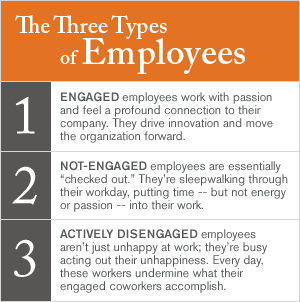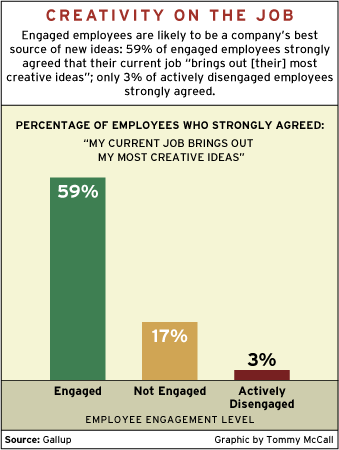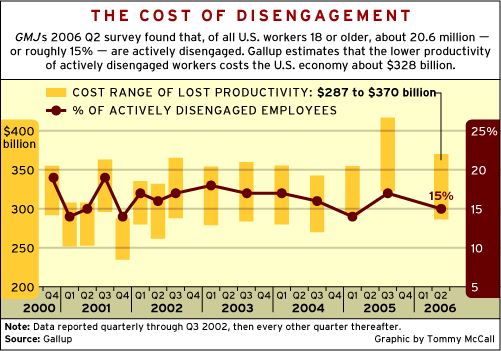How many times have you sat at your desk, doing something you'd rather not, thinking a raise or bonus would make everything so much better? How many times have you thought that raise or bonus might actually hinder your performance? The answer to the second question is probably a much smaller number, but scientific data show this may be the case when it comes to certain tasks.
Daniel Pink, author of the bestseller A Whole New Mind and the new book Drive, says the key to high performance and satisfaction isn't about money; it's about internal motivation, what he calls Motivation 3.0.
There is a huge gap what science knows and what management does.The same gap that suck good worker's productivity like a quick sand.Ironically this is not totally the fault on the employees but merely the ignorant of the so call manager who label themselves as leader.
Behavioral scientist often divide the job we do in 2 categories which I doubt any top notch MBA class will touch on this.
• Algorithmic – a task which follows a set of established instructions down a single pathway to one conclusion.
• Heuristic – a task that has no algorithm, you have to experiment with possibilities and devise a novel solution.
You might ask at this point.So what's the big deal genius!
Because a breakthrough is not to be achieved through algorithmic task but in fact through heuristic task focus!
A key reason: Routine work can be outsourced or automated; artistic, empathic, non-routine work generally cannot.Keying in tonnes of excel grid,copying hard copy of data sheet in soft copy or sending scanned fax copy is an example of algorithm work. You can just outsource this to a secretary and not getting an engineer to get this done.Also, the other thing that changed is what people are doing at work. We're doing less of the routine, rule-based algorithmic work, whether that means turning the same screw the same way over and over again on an assembly line or even adding up columns of figures over and over again. The vast majority of white-collar work and even much of blue-collar work today requires much more conceptual thinking, much more creativity.
In the U.S., only 30% of job growth comes from algorithmic work, while 70% comes from heuristic work. A key reason: Routine work can be outsourced or automated; artistic, empathic, non-routine work generally cannot.
External rewards and punishments can work nicely for algorithmic tasks but they can be devastating for heuristic ones. Solving novel problems depends heavily on the intrinsic motivation principle of creativity.
Working as a grocery checkout clerk is almost an algorithmic.You do pretty much the same thing over and all over again.
During this 20th centuries, many work WAS algorithm work.And it's not just jobs where you turn the same screw the same way all day long.Knowing these 2 difference will help manager in great deal in identifying the mismatch of an employees role and the whole rewarding system.
And the science is very, very clear that traditional mechanisms of carrot-and-stick, if-then motivators [i.e., "If you do this, then you get that"] don't work for creative, conceptual tasks.
Because what those if-then motivators do is that they focus our attention and they concentrate the mind. And so if you say to me, "Ray, I'll give you $500 to do something," you have my attention. I'm completely focused on that task. And I'm thinking, "What does she want me to do?" Because I'm going to do that.
Now, that's very good if you want people to carry out a prescribed set of instructions, because it focuses our attention in a very narrow way. That's actually very helpful in certain ways. If you're stuffing envelopes, just focusing on stuffing envelopes, you'll get it done faster. If you're processing something on an assembly line, focusing on that one particular task will allow you to get it done faster.
The problem is that for creative conceptual tasks, you don't want a narrow focus. You want a wide focus. If you have a narrow focus, you're not going to have a solution to a problem. You're not going to make anything close to a conceptual breakthrough.
Why do you think organizations continue to operate under the old assumption of carrots and sticks?
I think there's actually a mix of reasons for that. One of them has to do with the fact that these if-then motivators have worked for a long time. The other thing about it, which I think is an even somewhat harder problem to solve, is that they work, or at least they seem to work, in the short term.
For example, say an executive director of an association says to her staff, "We need to come up with a new idea for recruiting members, and I'll give whoever comes up with the best idea a $2,500 bonus." I can guarantee that that executive director's staff is going to start scurrying with activity. And so that executive director says,
"Oh, look what a great leader I am. Everybody's working so hard."
The problem is that you've fostered activity, but you haven't fostered any kind of creative thinking. These if-then rewards actually deliver either results or the appearance of results in the short term, so that fakes us out.
However, if she were to say to her staff, "Hey, we really have to come up with something new for recruiting members. I think it can really play a big role in our organization. And I think you folks have the capacity and the talent and the drive to really come up with something great. So why don't you take the next month or so and try to come up with some great ideas. Organize it the way that you want. … I'm here to help you, give you resources and feedback, and what not."
Then, if those people do come up with an awesome idea, after the fact she could say, "Now that you've come up with this breakthrough idea, thanks." I mean, I think thank you is a pretty important form of feedback. She could then recognize them in front of the rest of the staff, or recognize them individually. She could even offer a small cash bonus.
Because it's after the fact, it's not trying to control their behavior; it's a form of recognition and a form of feedback, and it's far less corrosive. So I think that's a way to combine it. The danger is that if you start doing that, some people will expect a now-that reward every time they lift a finger.
Organization leaders need to say, "How much time in the last week have I spent helping identify progress people are making, helping recognize and celebrate progress that people are making?" My hunch is that the answer to that is going to be very, very little. And even upping that a little bit can be really powerful.






































